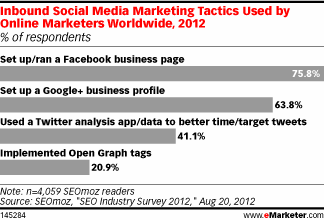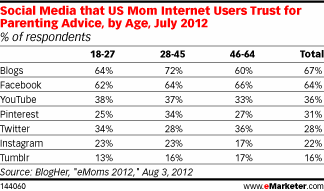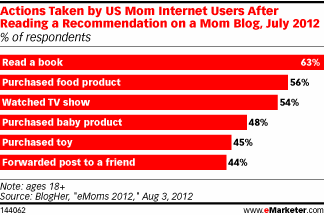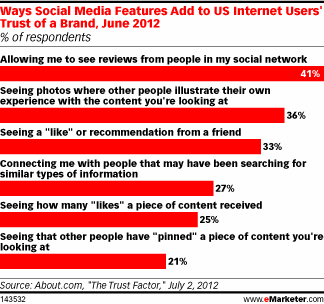Since its launch 15 months ago, a big question still remains: Is Google+ a SEO/SEM tool or a social media platform?
Google+ has grown tremendously in the past year (400M users as of September 2012) but the lack of engagement has led to comparing the platform to a ghost town. Is the comparison fair, if you look at the figures, it certainly seem so.
A study from RJ Metrics shows that
- The average post on Google+ has less than one reply, reshare and +1.
- 15% of users will not post publicly again even after posting publicly five times.
- The average time between posts is 12 days for active users.
- The average number of public posts per active users declines steadily month after month.
In contrast, a the Pew Internet & American Life Project found that 52% of Facebook users and 33% of Twitter users engage with the platform daily and a ComScore survey shows that Google+ users spent an average of 3.3 minutes on the site in January vs. 7.5 hours for Facebook.
In response to these dismal figures, Google decide to flex its muscle and leverage its strength in searches by weaving Google+ in their search results, forcing businesses in Google+ by shelving Google places and integrating Google+ and +1 in their search algorithm and the approach seems to show some results
According to an August 2012 survey by SEOMoz,
- 54.9% of online marketers worldwide said Google+ was one of their top five most-used sites for social media marketing, compared to 87.7% who cited Facebook and 82.7% who cited Twitter. Google+ did, however, come in above YouTube, which 48.9% of respondents cited.
- 63.8% of respondents stated that they had set up a Google+ business profile, compared to 75.8% who set up or ran a Facebook business page.

- 89.5% cited changes in Google’s algorithm, like Google Panda, and Google+ as likely to make authorship, site and author ownership of content more important in the coming years
- 56.4% said Google+ was likely to become massively influential in search engine results pages. Adoption and use of mobile and Facebook’s domination were also mentioned by 81.7% and 69.1% of online marketers, respectively.
- 56.1% use Google+ for SEO
- 65.9% use Google+ for branding,despite the lack of user numbers and buzz



 My view is that social media customer service is a complete failure due to a number of factors. For example you have companies out there that are focusing on people with the high Klout score. I don’t think that works so well. Look at that concept through the lens of some of the famous instances over the years. I worked for a cable company and at one point there was a video of a technician sleeping. The person who put that video up had posted two videos, ever. Let’s face it, it was just good content. It was just something we enjoyed watching — so we watched it over and over again. I am not a fan of influencer-based marketing, or providing priority service based on someone’s Klout score.
My view is that social media customer service is a complete failure due to a number of factors. For example you have companies out there that are focusing on people with the high Klout score. I don’t think that works so well. Look at that concept through the lens of some of the famous instances over the years. I worked for a cable company and at one point there was a video of a technician sleeping. The person who put that video up had posted two videos, ever. Let’s face it, it was just good content. It was just something we enjoyed watching — so we watched it over and over again. I am not a fan of influencer-based marketing, or providing priority service based on someone’s Klout score.









